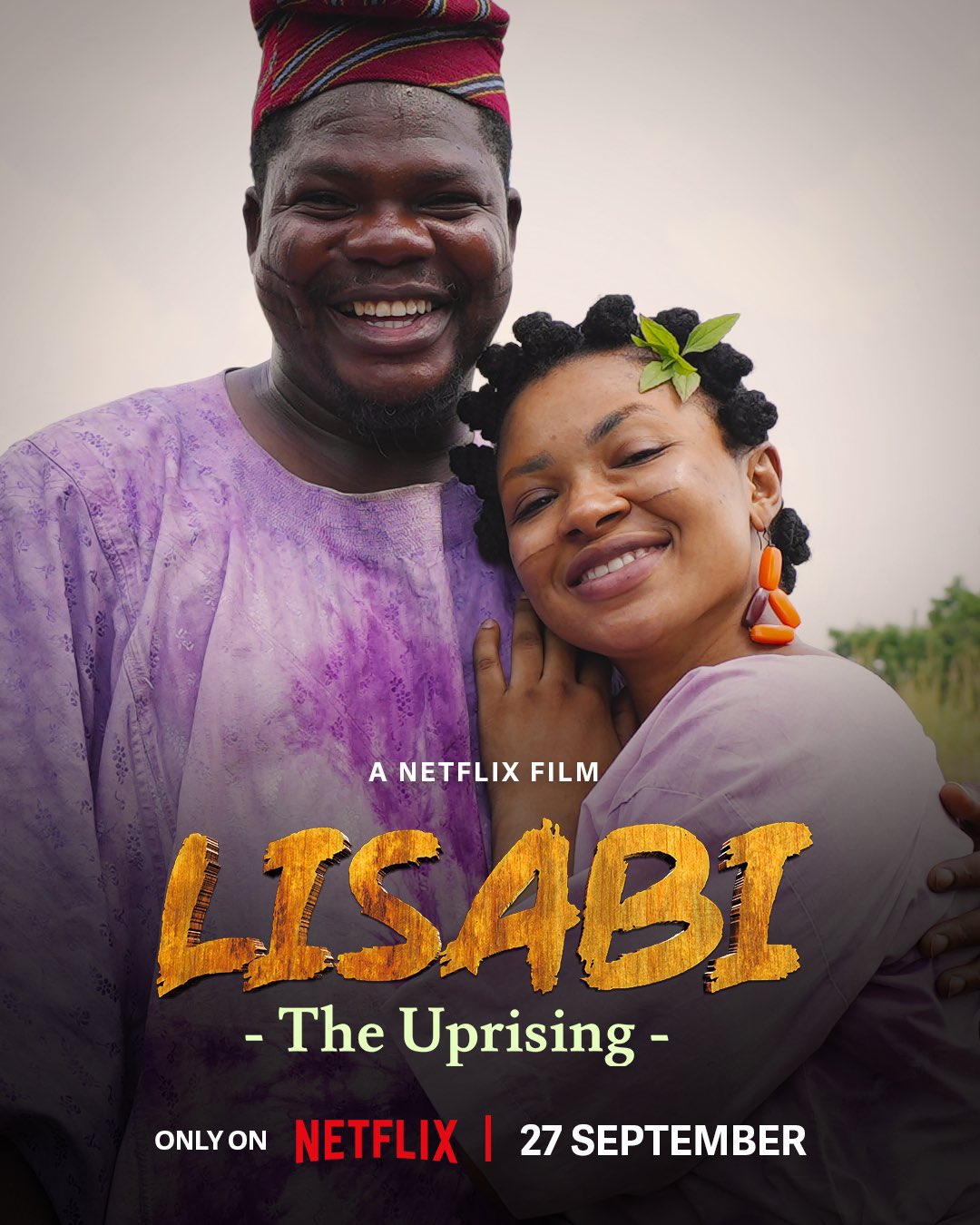By Basheer Luqman Olarewaju
Lateef Adedimeji’s Lísàbí: The Uprising is a laudable attempt to showcase an often-overlooked chapter of Yoruba history. The story of Lisabi, the 18th-century Egba farmer who led a rebellion against the oppressive Oyo Empire, has the potential to resonate deeply with audiences. Importantly, while the film succeeds in certain areas, there are also significant shortcomings that hinder its overall impact.
On Plot and Historical Context…
The narrative of Lísàbí: The Uprising is anchored in a rich historical moment, telling the story of how Lisabi led his people to freedom from the powerful Oyo Empire. The historical significance is clear, but the plot itself lacks the depth and nuance needed to fully capture the gravity of this rebellion. While the movie delivers a general sense of Lisabi’s struggle, it fails to explore the complexity of the Egba-Oyo dynamics or delve into the personal motivations of key characters. This leaves the plot feeling somewhat shallow, lacking the emotional depth that could have heightened the film’s tension and drama.
On Casting and Acting…
The cast is undoubtedly one of the film’s strongest points. Lateef Adedimeji as Lisabi brings a commanding presence to the screen, skillfully portraying the quiet intensity of the Egba hero. His performance is well-executed, balancing charisma with a deep sense of duty. However, some of the supporting characters feel underutilized. Notable actors such as Femi Adebayo and Odunlade Adekola, who play pivotal roles, seem constrained by the script, unable to fully showcase their acting prowess. Similarly, Ibrahim Chatta playing supporting role limited his full dramatic action. There is also a lack of chemistry between some characters, which affects the authenticity of their relationships on-screen.
Cinematography and Direction…
The film’s visual aesthetics are impressive at first glance. Director Niyi Akinmolayan’s attention to detail is evident in the cinematography, especially in the wide shots of the Yoruba landscapes, which capture the beauty and expanse of the setting. The action sequences, however, are a mixed bag. While some battle scenes are well choreographed, many feel repetitive and lack the sharp editing needed to convey the high stakes of the rebellion. Additionally, the pacing of the film suffers in certain areas, with some scenes dragging on too long without contributing to the overall narrative momentum.
On Sound and Music…
The sound design is perhaps one of the most frustrating elements of Lísàbí: The Uprising. While the traditional Yoruba soundtrack adds an authentic layer to the film, the mixing is inconsistent. At times, the background music overpowers the dialogue, making it difficult to understand key conversations. This is particularly problematic in moments of emotional intensity, where clear dialogue is essential to building character development and advancing the plot. On the other hand, the use of traditional instruments adds a cultural richness that enhances the movie’s setting, grounding it firmly in the Yoruba tradition.
On Setting and Costuming…
The production design shines in terms of setting and costuming. The sets effectively transport the audience back to the 18th century, with meticulously crafted huts, villages, and traditional attire that reflect the time period. The costuming is one of the film’s strongest elements, as it provides an authentic representation of Yoruba royalty and the common folk alike. However, the film misses opportunities to further explore the diversity of Oyo and Egba cultures. A more nuanced representation of the differences between the two would have added layers to the conflict that Lísàbí: The Uprising seeks to portray.
On Actions and Choreography…
When it comes to action, Lísàbí: The Uprising delivers moments of intensity but fails to maintain consistency. The climactic battle scenes, though thrilling at first, become repetitive, with the choreography lacking variation or creativity. This undermines the impact of key moments, such as Lisabi’s strategic victories over the Oyo soldiers. Additionally, some of the action scenes feel poorly executed due to limited special effects, which sometimes make pivotal moments feel anticlimactic. However, there are flashes of brilliance in the hand-to-hand combat scenes, which demonstrate the physical prowess of the actors.
The Positive Aspects…
While the film has its flaws, it succeeds in bringing to life a crucial part of Nigerian history. Lateef Adedimeji’s passion for telling this story is evident in his performance and production effort. The film also excels in its portrayal of Yoruba culture, particularly in its traditional music and costume design. Furthermore, the film’s ambition in attempting to present a historical epic is laudable, and it fills an important gap in African storytelling, which often overlooks indigenous heroes like Lisabi.
The use of local language and cultural references is another strong point, as it adds authenticity to the film and allows Yoruba-speaking audiences to connect more deeply with the story. Additionally, the decision to split the movie into two parts (Lísàbí: A Legend is Born is set for release in January 2025) is a strategic move, allowing for more time to develop the complex historical narrative.
Finally…
Overall, Lísàbí: The Uprising is an ambitious project that falls short of its full potential. While the casting and cultural elements are commendable, the film is let down by uneven pacing, underdeveloped characters, and inconsistent sound design. For fans of historical epics and Nigerian history, this film offers an important, albeit flawed, glimpse into the life of one of Yoruba’s greatest heroes. As a cultural piece, it’s significant, but as a cinematic experience, it struggles to maintain the momentum necessary to truly captivate its audience.
Rating: 6.5/10


